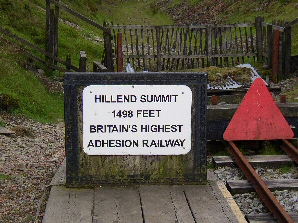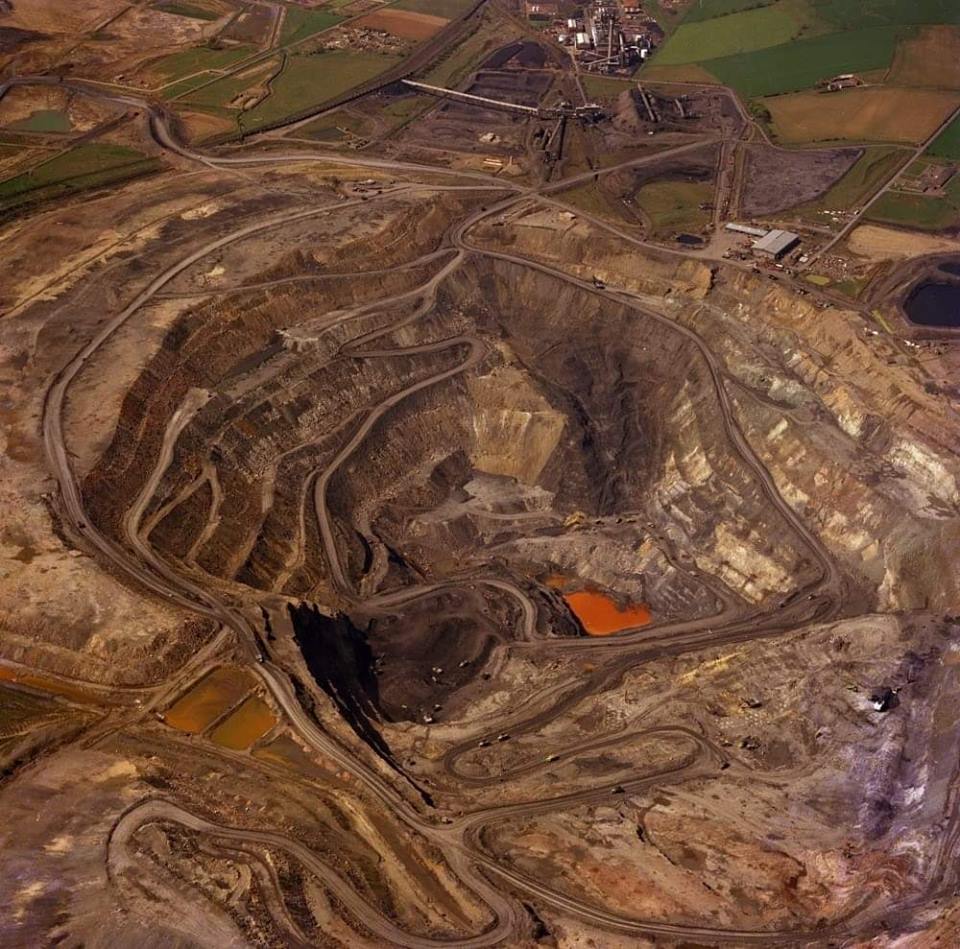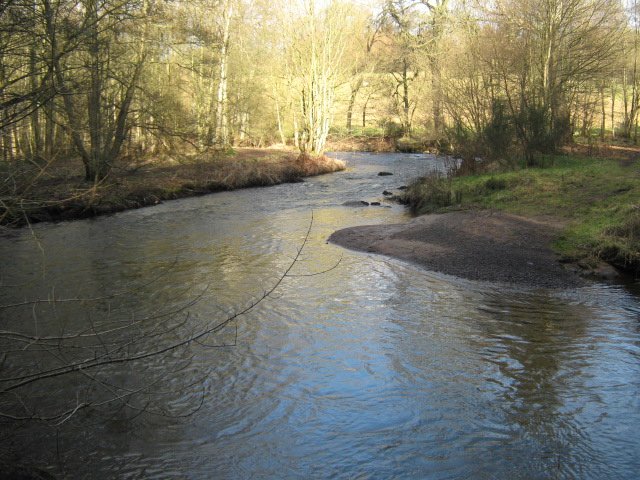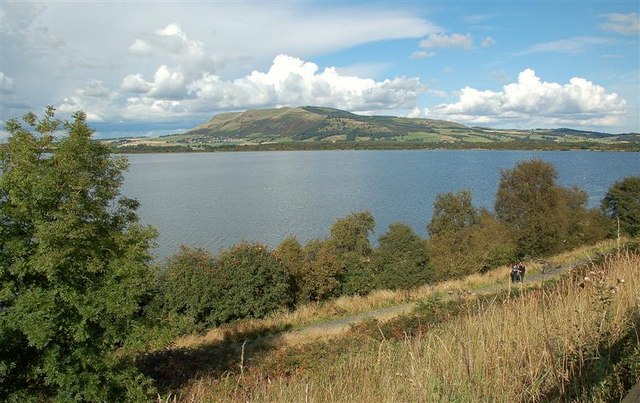|
James Braid (surgeon)
James Braid (19 June 1795 – 25 March 1860) was a Scottish surgeon, natural philosopher, and "gentleman scientist". He was a significant innovator in the treatment of clubfoot, spinal curvature, knock-knees, bandy legs, and squint; a significant pioneer of hypnotism and hypnotherapy, and an important and influential pioneer in the adoption of both hypnotic anaesthesia and chemical anaesthesia. He is regarded by some, such as Kroger (2008, p. 3), as the "Father of Modern Hypnotism"; however, in relation to the issue of there being significant connections between Braid's "hypnotism" and "modern hypnotism" (as practised), let alone "identity", Weitzenhoffer (2000, p. 3) urges the utmost caution in making any such assumption: Also, in relation to the clinical application of "hypnotism", Early life Braid was the third son, and the seventh and youngest child, of James Braid (c. 1761–184?) and Anne Suttie (c. 1761–?). He was born at Ryelaw House, in the Pa ... [...More Info...] [...Related Items...] OR: [Wikipedia] [Google] [Baidu] |
Kinross-shire
The County of Kinross or Kinross-shire is a historic county and registration county in eastern Scotland, administered as part of Perth and Kinross since 1930. Surrounding its largest settlement and county town of Kinross, the county borders Perthshire to the north and Fife to the east, south and west. Scotland's second smallest county, Kinross-shire is dominated by Loch Leven, a large inland loch, with two islands and an internationally important nature reserve. One of the islands contains a castle, where Mary, Queen of Scots was once held prisoner. Much of the land in Kinross-shire is fertile agricultural land and most of the inhabitants were originally employed in farming. The gently-rolling farmland surrounding Loch Leven gives way to steep, more rugged terrain at the outskirts of the county. History The shire or sheriffdom of Kinross was formed in the thirteenth century when the two parishes of Kinross and Orwell were removed from the Fothriff area of Fife. Cleish, Portm ... [...More Info...] [...Related Items...] OR: [Wikipedia] [Google] [Baidu] |
Clubfoot
Clubfoot is a birth defect where one or both feet are rotated inward and downward. Congenital clubfoot is the most common congenital malformation of the foot with an incidence of 1 per 1000 births. In approximately 50% of cases, clubfoot affects both feet, but it can present unilaterally causing one leg or foot to be shorter than the other. Most of the time, it is not associated with other problems. Without appropriate treatment, the foot deformity will persist and lead to pain and impaired ability to walk, which can have a dramatic impact on the quality of life. The exact cause is usually not identified. Both genetic and environmental factors are believed to be involved. There are two main types of congenital clubfoot: idiopathic (80% of cases) and secondary clubfoot (20% of cases). The idiopathic congenital clubfoot is a multifactorial condition that includes environmental, vascular, positional, and genetic factors. There appears to be hereditary component for this birth d ... [...More Info...] [...Related Items...] OR: [Wikipedia] [Google] [Baidu] |
Leadhills
Leadhills, originally settled for the accommodation of miners, is a village in South Lanarkshire, Scotland, WSW of Elvanfoot. The population in 1901 was 835. It was originally known as Waterhead. It is the second highest village in Scotland, the highest being neighbouring Wanlockhead, south. It is near the source of Glengonnar Water, a tributary of the River Clyde. Local attractions Library The Leadhills Miners' Library (also known as the Allan Ramsay (poet), Allan Ramsay Library or the Leadhills Reading Society), founded in 1741 by 21 miners, the local schoolteacher and the local minister, specifically to purchase a collection of books for its members’ mutual improvement — its membership was not restricted to the miners; several non-miners, such as William Symington, John Brown (physician, born 1810), John Brown (author of ''Rab and his Friends'') and James Braid (surgeon), James Braid, were also full members — houses an extensive antiquarian book collection, local ... [...More Info...] [...Related Items...] OR: [Wikipedia] [Google] [Baidu] |
Fife
Fife (, ; gd, Fìobha, ; sco, Fife) is a council area, historic county, registration county and lieutenancy area of Scotland. It is situated between the Firth of Tay and the Firth of Forth, with inland boundaries with Perth and Kinross (i.e. the historic counties of Perthshire and Kinross-shire) and Clackmannanshire. By custom it is widely held to have been one of the major Pictish kingdoms, known as ''Fib'', and is still commonly known as the Kingdom of Fife within Scotland. A person from Fife is known as a ''Fifer''. In older documents the county was very occasionally known by the anglicisation Fifeshire. Fife is Scotland's third largest local authority area by population. It has a resident population of just under 367,000, over a third of whom live in the three principal towns, Dunfermline, Kirkcaldy and Glenrothes. The historic town of St Andrews is located on the northeast coast of Fife. It is well known for the University of St Andrews, the most ancient univers ... [...More Info...] [...Related Items...] OR: [Wikipedia] [Google] [Baidu] |
Kinglassie
Kinglassie (Scottish Gaelic: ''Cill Ghlaise'') is a small village and parish in central Fife, Scotland. It is located two miles southwest of Glenrothes. It has a population of around () The civil parish has a population of 22,543 (in 2011).Census of Scotland 2011, Table KS101SC – Usually Resident Population, publ. by National Records of Scotland. Web site http://www.scotlandscensus.gov.uk/ retrieved March 2016. See “Standard Outputs”, Table KS101SC, Area type: Civil Parish 1930 History The village of Kinglassie (pronounced Kin-glassie) lies to the north of the Lochty Burn, southwest of Glenrothes in Fife, and two miles southeast of Perth and Kinross district. The name of the village derives from Scottish Gaelic, although the exact meaning is obscure. The name was first recorded as "Kilglassin" in 1127. The first element, kil, is from the Gaelic, ''cill'', meaning monk's cell or church, but was changed to kin or ''ceann'', meaning head or end, by the 13th century. The e ... [...More Info...] [...Related Items...] OR: [Wikipedia] [Google] [Baidu] |
River Leven, Fife
The River Leven ( gd, Lìobhann / Abhainn Lìobhann) is a river in Fife, Scotland. It flows from Loch Leven into the Firth of Forth at the town of Leven. The river is home to brown trout and hosts a run of sea trout and atlantic salmon. The estuary has bass and mullet. In previous centuries its water was used to power linen mills on its banks, particularly near Markinch, as well as three paper mills: Smith Anderson in Leslie, and Tullis Russell and John Dixon of Markinch. The River Ore, Fife A river is a natural flowing watercourse, usually freshwater, flowing towards an ocean, sea, lake or another river. In some cases, a river flows into the ground and becomes dry at the end of its course without reaching another body of wat ... is a tributary of the River Leven, joining it at . External linksScottish gazetteer on the river"Forth District Salmon Fishery Board""River Forth Fisheries Trust""River Leven Angling Club" Levenmouth Rivers of Fife 0Leven {{ ... [...More Info...] [...Related Items...] OR: [Wikipedia] [Google] [Baidu] |
Scotland
Scotland (, ) is a country that is part of the United Kingdom. Covering the northern third of the island of Great Britain, mainland Scotland has a border with England to the southeast and is otherwise surrounded by the Atlantic Ocean to the north and west, the North Sea to the northeast and east, and the Irish Sea to the south. It also contains more than 790 islands, principally in the archipelagos of the Hebrides and the Northern Isles. Most of the population, including the capital Edinburgh, is concentrated in the Central Belt—the plain between the Scottish Highlands and the Southern Uplands—in the Scottish Lowlands. Scotland is divided into 32 administrative subdivisions or local authorities, known as council areas. Glasgow City is the largest council area in terms of population, with Highland being the largest in terms of area. Limited self-governing power, covering matters such as education, social services and roads and transportation, is devolved from the Scott ... [...More Info...] [...Related Items...] OR: [Wikipedia] [Google] [Baidu] |
Portmoak
Portmoak is a parish in Kinross-shire, Scotland. It consists of a group of settlements running north to south: Glenlomond, Wester Balgedie, Easter Balgedie, Kinnesswood, Kilmagadwood and Scotlandwell. The name derives from the Port of St Moak (an alternative name for St Monan), being a port in relation to Loch Leven The main villages are Kinnesswood (where the Post Office is situated) and Scotlandwell. Geography The parish is on the east side of Kinross-shire lying between Loch Leven and Fife. It is bounded by the parishes of Cleish, Kinross, Orwell, Strathmiglo, Falkland, Leslie, Kinglassie, Auchterderran and Ballingry. The area is a rich landscape of braes, crags, fine meadows, fertile fields and plantations. Bishop Hill The entire area of Portmoak is dominated by Bishop Hill, 500 ft (460 m) high, one of the Lomond Hills, known locally as "the bishop". On its lower reaches are oak, rowan and Scots pine. It is best approached by walkers from Scotlandwell. A ... [...More Info...] [...Related Items...] OR: [Wikipedia] [Google] [Baidu] |
Phenomenology (psychology)
Phenomenology within psychology, or phenomenological psychology, is the psychological study of subjective experience. It is an approach to psychological subject matter that attempts to explain experiences from the point of view of the subject via the analysis of their written or spoken word. The approach has its roots in the phenomenological philosophical work of Edmund Husserl. Giorgi, Amedeo. (1970). ''Psychology as a Human Science.'' New York : Harper & Row. History of phenomenology Early phenomenologists such as Husserl, Jean-Paul Sartre, and Maurice Merleau-Ponty conducted philosophical investigations of consciousness in the early 20th century. Their critiques of psychologism and positivism later influenced at least two main fields of contemporary psychology: the phenomenological psychological approach of the Duquesne School (the descriptive phenomenological method in psychology), including Amedeo Giorgi Giorgi, Amedeo. (2009). ''The Descriptive Phenomenological Method ... [...More Info...] [...Related Items...] OR: [Wikipedia] [Google] [Baidu] |
History Of General Anesthesia
Attempts at producing a state of general anesthesia can be traced throughout recorded history in the writings of the ancient Sumerians, Babylonians, Assyrians, Egyptians, Indians, and Chinese. The Renaissance saw significant advances in anatomy and surgical technique. However, despite all this progress, surgery remained a treatment of last resort. Largely because of the associated pain, many patients with surgical disorders chose certain death rather than undergo surgery. Although there has been a great deal of debate as to who deserves the most credit for the discovery of general anesthesia, it is generally agreed that certain scientific discoveries in the late 18th and early 19th centuries were critical to the eventual introduction and development of modern anesthetic techniques. Two major advances occurred in the late 19th century, which together allowed the transition to modern surgery. An appreciation of the germ theory of disease led rapidly to the development and applica ... [...More Info...] [...Related Items...] OR: [Wikipedia] [Google] [Baidu] |
Hypnotherapy
Hypnotherapy is a type of mind–body intervention in which hypnosis is used to create a state of focused attention and increased suggestibility in the treatment of a medical or psychological disorder or concern. Popularized by 17th and 18th century psychologists such as James Braid and Milton H. Erickson, today the use of hypnosis as a form of therapy to retrieve and integrate early trauma is controversial within the scientific mainstream. Use of hypnosis for treatment of other problems has produced mixed results, such as with smoking cessation. Research indicates that hypnotising an individual may aid the formation of false memories, and that hypnosis "does not help people recall events more accurately". Definition The United States Department of Labor's ''Dictionary of Occupational Titles'' (DOT) describes the job of the hypnotherapist:"Induces hypnotic state in client to increase motivation or alter behavior patterns: Consults with client to determine nature of problem. Pr ... [...More Info...] [...Related Items...] OR: [Wikipedia] [Google] [Baidu] |
Strabismus
Strabismus is a vision disorder in which the eyes do not properly align with each other when looking at an object. The eye that is focused on an object can alternate. The condition may be present occasionally or constantly. If present during a large part of childhood, it may result in amblyopia, or lazy eyes, and loss of depth perception. If onset is during adulthood, it is more likely to result in double vision. Strabismus can occur due to muscle dysfunction, farsightedness, problems in the brain, trauma or infections. Risk factors include premature birth, cerebral palsy and a family history of the condition. Types include esotropia, where the eyes are crossed ("cross eyed"); exotropia, where the eyes diverge ("lazy eyed" or "wall eyed"); and hypertropia or hypotropia where they are vertically misaligned. They can also be classified by whether the problem is present in all directions a person looks (comitant) or varies by direction (incomitant). Diagnosis may be made by obser ... [...More Info...] [...Related Items...] OR: [Wikipedia] [Google] [Baidu] |
.jpg)
.jpg)








